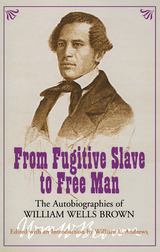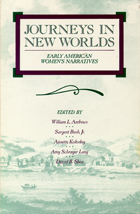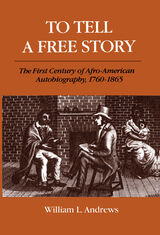Growing up as a slave in an urban area of Missouri allowed William Wells Brown to live a life that was different from that of the plantation slave so often discussed in slave histories. Born in 1814, the son of a white man and a slave woman, Brown spent the first twenty years of his life mainly in St. Louis and the surrounding areas working as a house servant, a field hand, a tavern keeper’s assistant, a printer’s helper, an assistant in a medical office, and a handyman for James Walker, a Missouri slave trader. During his time with Walker, Brown made three trips up and down the Mississippi River. These trips allowed him to encounter slavery from every perspective and provided experiences he would draw on throughout his writing career.
In
From Fugitive Slave to Free Man, two of Brown’s best-known writings,
Narrative of William W. Brown, A Fugitive Slave. Written by Himself and
My Southern Home: or, The South and Its People, are reprinted together with an expanded introduction by William L. Andrews. Brown’s
Narrative, published in 1847, was his first autobiographical writing and was received with wide acclaim, going through four American and five British editions. Only Frederick Douglass’s autobiography sold better, casting a constant shadow over Brown’s works. Douglass and his life were touted as extraordinary, while Brown was referred to as the typical “every man’s slave.” However, the life of William Brown and his writings prove otherwise.
Determined to be a man of letters, Brown was the first African American to write a travel book,
Three Years in Europe: or, Places I Have Seen and People I Have Met, which was based on his time abroad in Paris at an international peace conference and in England on an anti-slavery crusade. A year later he published
Clotel, the first novel written by an African American and the first to exploit the decades-old rumors of an affair between President Thomas Jefferson and his slave Sally Hemmings. Between 1854 and 1867, Brown published the first drama by an African American,
The Escape: or, A Leap for Freedom, and two volumes of black history, one of which is the first military history of the African American in the United States.
In 1880, Brown wrote his final autobiography, My Southern Home. In it he endeavors to explain the complex interrelationships between blacks and whites in the South. Taken together, both of the books included in this volume provide fascinating contrasts, especially in their depictions of slavery, and illustrate the creative innovations Brown developed in various forms of life writing—some of which were more experimental than Douglass’s and more prophetic of the future of African American literature.












